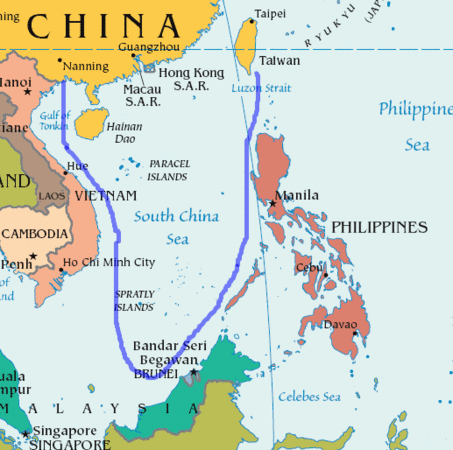A Re-Birth of Imperial Japan?
- China has become very aggressive with their neighbors in all directions and claimed as their own huge sections of open ocean.
- In response Japan is starting to build a more powerful navy.
China has sent warplanes to its newly declared air defense zone in the East China Sea, state media reports.
Japan, South Korea and the US have all since flown military aircraft through the area.
China's state news agency Xinhua quoted air force spokesman Col. Shen Jinke as saying several fighter jets and an early warning aircraft had been deployed to carry out routine patrols as "a defensive measure and in line with international common practices" reports BBC News.
He said the country's air force would remain on high alert and would take measures to deal with all air threats to protect national security.
In Xinhua's Chinese language version of the article, the colonel said the aircraft would "strengthen the monitoring of targets in the air defense zone and do their duty".
 |
| The Chinese are Coming |
Testing China’s response, Japanese military aircraft flew through a new air defense zone that Beijing has declared over disputed islands, a Japanese government spokesman said Thursday. He said there was no response to the flights by the Chinese side.
The announcement of the flights came after American B-52 heavy bombers flew through the same airspace in defiance of China, which last weekend announced it had the right to police a vast area over much of the East China Sea. Beijing later said that it had monitored the American bombers but had chosen not to take action.
On Thursday, the top Japanese government spokesman, Chief Cabinet Secretary Yoshihide Suga, said that Japan had followed suit by sending an unspecified number of patrol planes into the airspace, though he did not specify exactly when they had flown. The aircraft patrolled the airspace on routine reconnaissance flights without incident, and China did not scramble its fighter jets to intercept them, Suga said reports the New York Times.
Suga said that the aircraft had flown without informing China, defying Beijing’s demands that all traffic entering the so-called air defense identification zone file flight plans with China first. Japan and the United States have both refused to recognize the air zone, which covers the disputed islands, known as the Senkaku in Japan and Diaoyu in Chinese. The islands are administered by Japan, but also claimed by China.
The South Korean government also said that it had flown surveillance aircraft through the zone on Wednesday without alerting Beijing, a flight that Chinese officials said that they had monitored. Like Japan, South Korea claims sovereignty over territory in the zone, but enjoys warmer ties with Beijing than Japan does.
When China declared the air zone on Saturday, it said that it would police the airspace with military aircraft, a move that raised the specter of Japanese and Chinese fighter jets intercepting each other. The move drew immediate criticism from both Japan and from the United States, which is obligated by treaty to defend Japan from attack.
China’s failure so far to enforce the zone appears to support the view of some Japanese officials, who say that the zone is just part of a broader, long-term strategy to try to pry the islands out of Japan’s grip. China has been doing this by sending coast guard ships around the islands, dispatching patrol aircraft and now claiming the airspace above — all steps, Japanese officials say, aimed at proving that China has just as much legal basis as Japan to claim that it administers the islands.
 |
| No one gives a damn about fish Fish??? Screw that. But the East China Sea has gas and oil deposits so suddenly China "remembers" that the area belongs to them. |
 |
| What's Yours is now Mine China is now claiming almost all of the South China Sea (blue line) and by magic there are oil and gas fields in the area. |
 |
| Japan's launches their largest warship In August, 2013 Japan unveiled the biggest warship since World War II, sparking concerns about the country's military buildup as observers said the vessel is actually an aircraft carrier. . Analysts believed that the upgraded warships in Japan and the Philippines are efforts to gain an upper hand in maritime disputes with China, as well as a catalyst igniting an arms race that would escalate regional tensions. . The Japanese-built carrier has a displacement of around 20,000 tons. It can accommodate 14 helicopters and will play a major role in disaster and rescue missions, as well as defend sea passages and Japanese territory, according to Japan's defense ministry. . But it is much larger than many countries' aircraft carriers in terms of displacement and deck length, and it can be easily and swiftly refitted to support F35-B fighters. . The vessel was named Izumo, the same name as the flagship of the Japanese fleet that invaded China in the 1930s. Tokyo likely intentionally chose the date of the vessel's debut — the 68th anniversary of the US dropping an atomic bomb on Hiroshima — to woo public support for the government's military ambitions by taking advantage of sentiments about the attack. . See more at GB Times. |

No comments:
Post a Comment